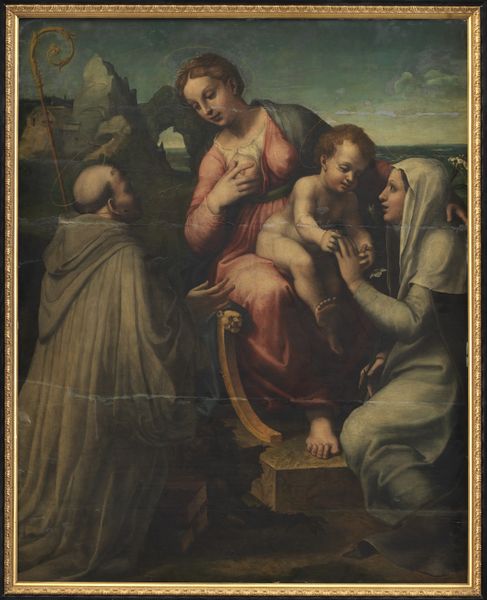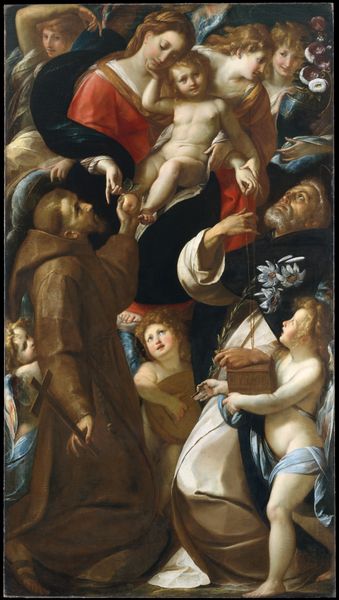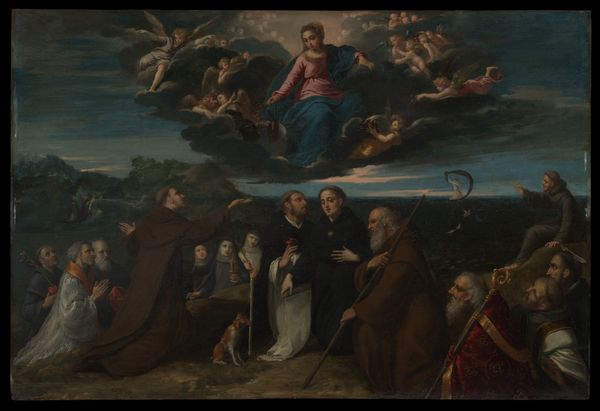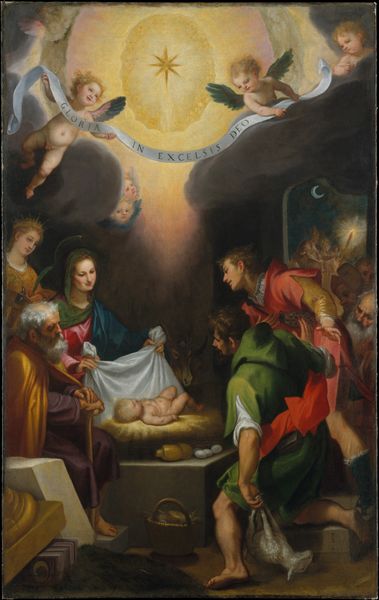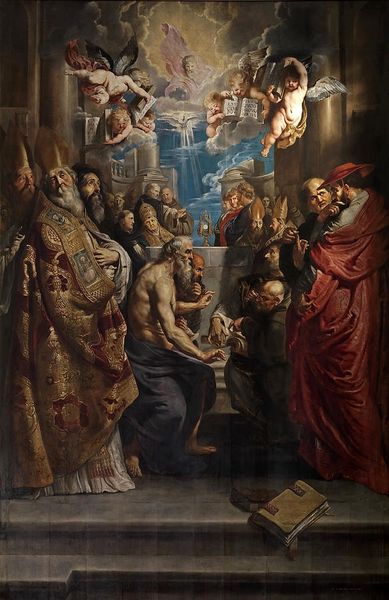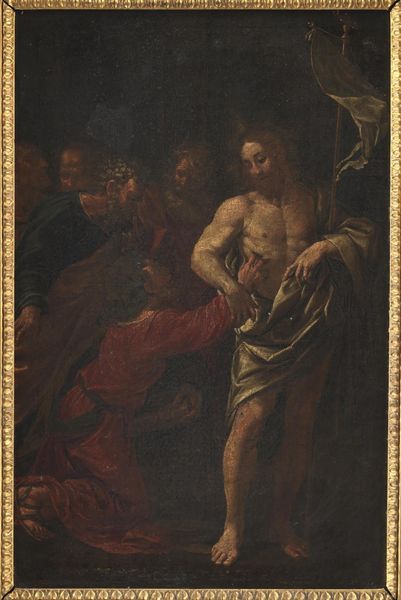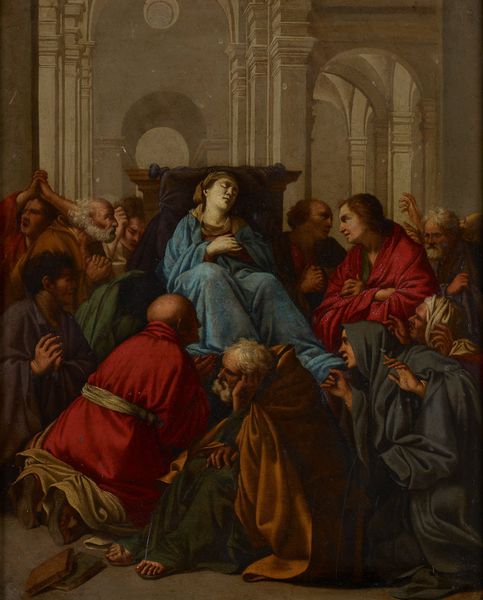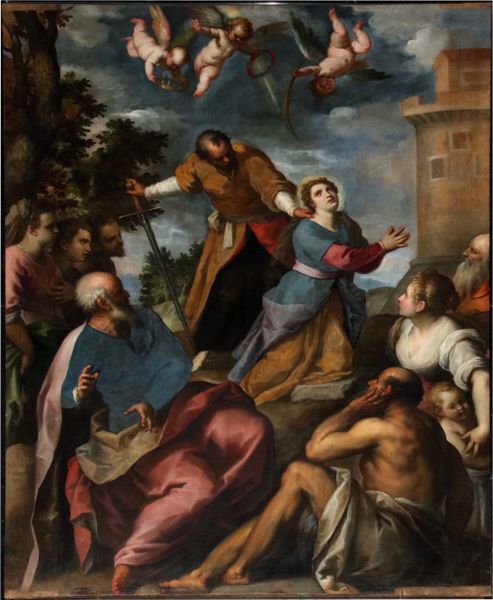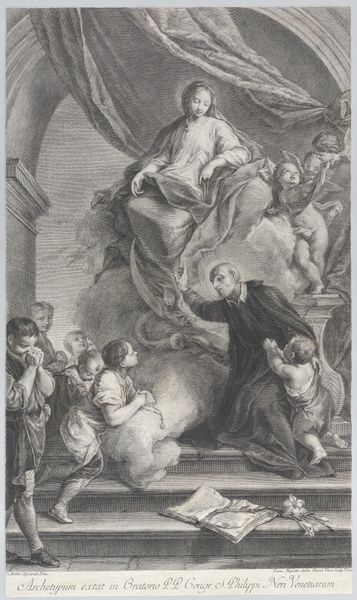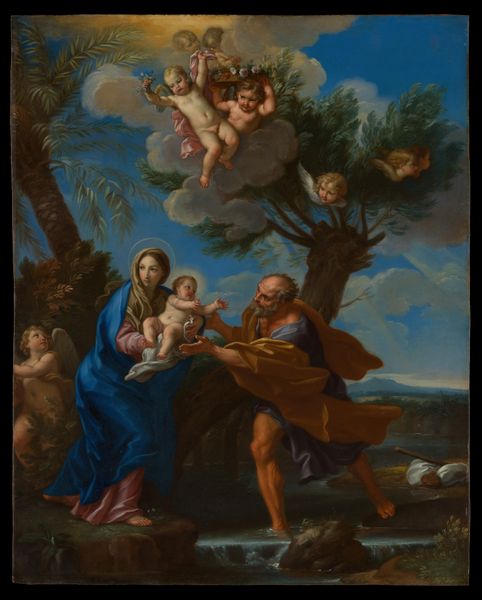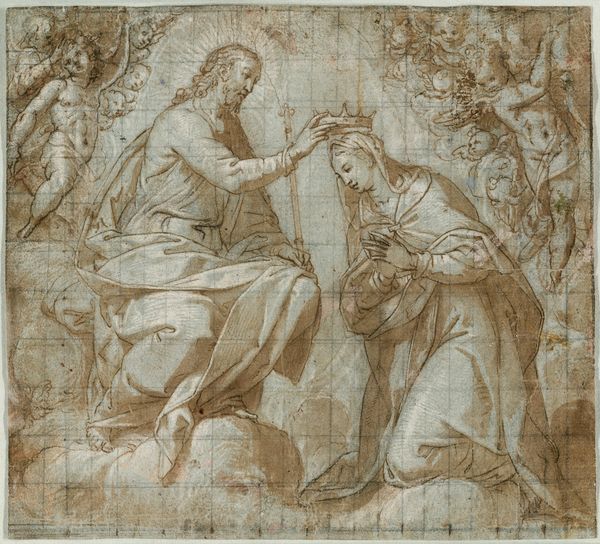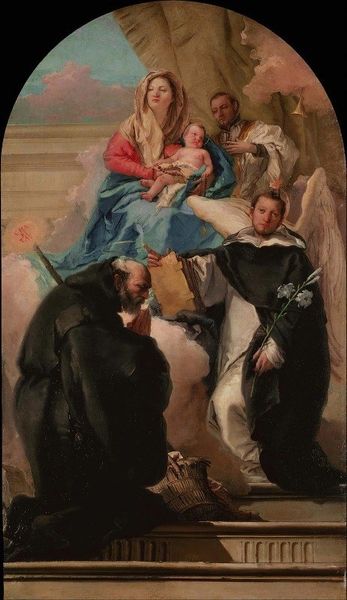
Madonna and Child Enthroned, with SS. Joseph, Domenic, Bartholomew, John the Baptist and Francis c. 1550 - 1600
0:00
0:00
oil, canvas
#
woman
#
animal
#
oil
#
charcoal drawing
#
possibly oil pastel
#
11_renaissance
#
charcoal art
#
oil painting
#
canvas
#
child
#
acrylic on canvas
#
underpainting
#
13_16th-century
#
painting painterly
#
charcoal
#
portrait art
#
watercolor
#
angel
Dimensions: 47.3 x 32.1 cm
Copyright: Public Domain
Editor: So, this is an oil on canvas, "Madonna and Child Enthroned, with SS. Joseph, Domenic, Bartholomew, John the Baptist and Francis," made around 1550 to 1600 by an anonymous artist. It's currently housed in the Städel Museum. The first thing that strikes me is the almost casual arrangement of such revered figures; it lacks a certain formality I’d expect. What do you see in this piece? Curator: I see a careful construction of cultural memory. The arrangement isn't casual, but rather a calculated representation of holiness accessible through different pathways. Consider John the Baptist with the lamb – a clear symbol of sacrifice. Then look at Saint Dominic, gesturing, presenting… what? The Madonna and Child as the Word incarnate? Editor: That’s interesting, the positioning feels very intentional now that you mention it. The lamb contrasts heavily with the other… I guess you could say… presenters? Curator: Precisely! Think about the tradition of donor portraits, where individuals of high status were included in religious scenes to demonstrate their piety and devotion. Is this arrangement about status? What if these Saints function, similarly, as access points to divinity, each offering a unique spiritual pathway through recognizable symbolism? Editor: So, each Saint's iconography—the lamb, the book, even their placement—works almost like a mnemonic device, helping the viewer connect to the divine through familiar figures and symbols? Curator: Exactly! The cultural memory embedded in these figures would have resonated deeply with contemporary viewers. These symbolic cues unlock layers of meaning, revealing how visual imagery sustains cultural narratives across generations. What does it tell us that the artist uses these visual strategies, in this period? Editor: It tells us a lot. Thank you for pointing those clues out, you’ve recontextualized the whole experience of interpreting paintings like these, making symbols visible rather than just…there! Curator: The act of interpreting is nothing more than understanding our own collective symbolic consciousness, I'm just happy I could help clarify it!
Comments
No comments
Be the first to comment and join the conversation on the ultimate creative platform.
